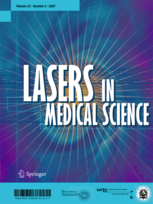
Adding Photobiomodulation to Physiotherapy Improves Sensory-Motor Recovery & QoL for Incomplete SCI

Adding Photobiomodulation to Physiotherapy Improves Sensory-Motor Recovery & QoL for Incomplete SCI
Sensory and motor responses after photobiomodulation associated with physiotherapy in patients with incomplete spinal cord injury: clinical, randomized trial.
Lasers Med Sci. 2020 Oct;35(8):1751-1758.Did you know you're eligible to earn 0.5 CME credits for reading this report? Click Here
Synopsis
Thirty patients with incomplete spinal cord injuries were randomized to receive 4 weeks of photobiomodulation and physiotherapy treatment or sham photobiomodulation and physiotherapy for the improvement of sensory-motor function and quality of life. The primary outcome of interest was the sensitivity and motor assessment via the American Spinal Injury Association (ASIA) Impairment Scale. The secon...
To view the full content, login to your account,
or start your 30-day FREE Trial today.
FREE TRIAL
LOGIN
Forgot Password?
Explore some of our unlocked ACE Reports below!

Learn about our AI Driven
High Impact Search Feature
Our AI driven High Impact metric calculates the impact an article will have by considering both the publishing journal and the content of the article itself. Built using the latest advances in natural language processing, OE High Impact predicts an article’s future number of citations better than impact factor alone.
Continue



 LOGIN
LOGIN

Join the Conversation
Please Login or Join to leave comments.